Fritz Leiber’s "Gather, Darkness!" Explores Power and Illusion
Fritz Leiber’s "Gather, Darkness!" blends science and sorcery in a tale of power, illusion, and control, a Golden Age classic that remains relevant for its bold vision and moral ambiguity.
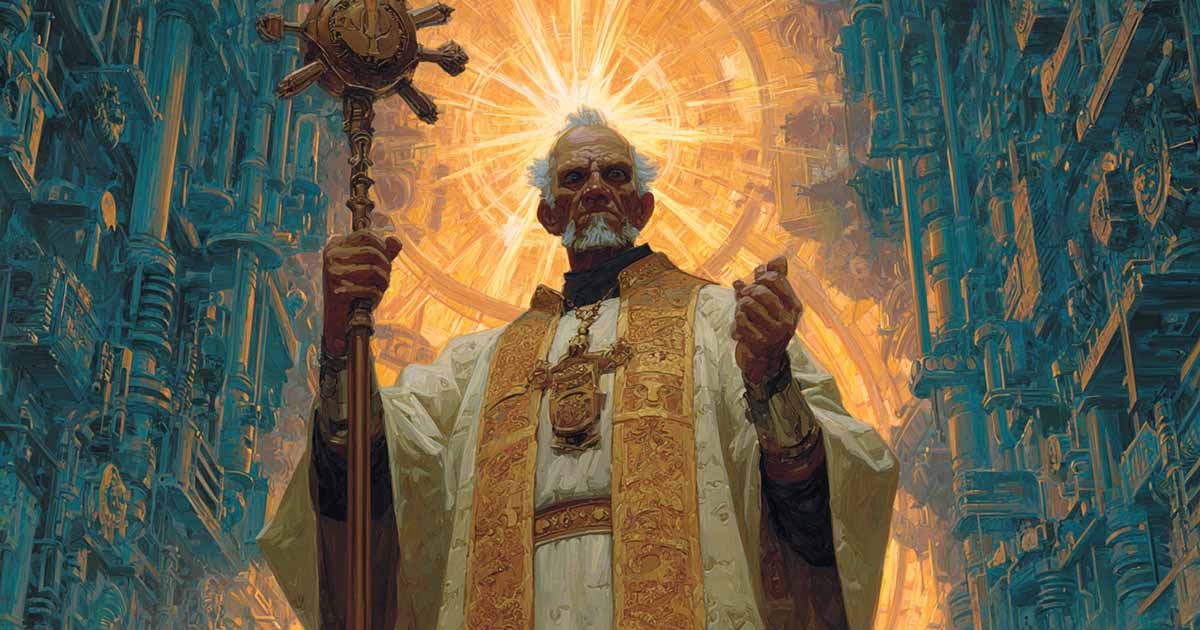
Fritz Leiber and the Shadow of a Theocracy
Fritz Leiber’s "Gather, Darkness!" first appeared in the May through July 1943 issues of "Astounding Science Fiction." It was a period when the world was at war and science fiction was growing beyond adventure into a literature of speculation.
The magazine under John W. Campbell had become the leading platform for writers willing to fuse entertainment with ideas, and Leiber proved to be one of the most ambitious new voices.
The novel came early in Leiber’s career. He had written a handful of short stories and was just beginning to shape the Fafhrd and Gray Mouser tales that would later make him famous.
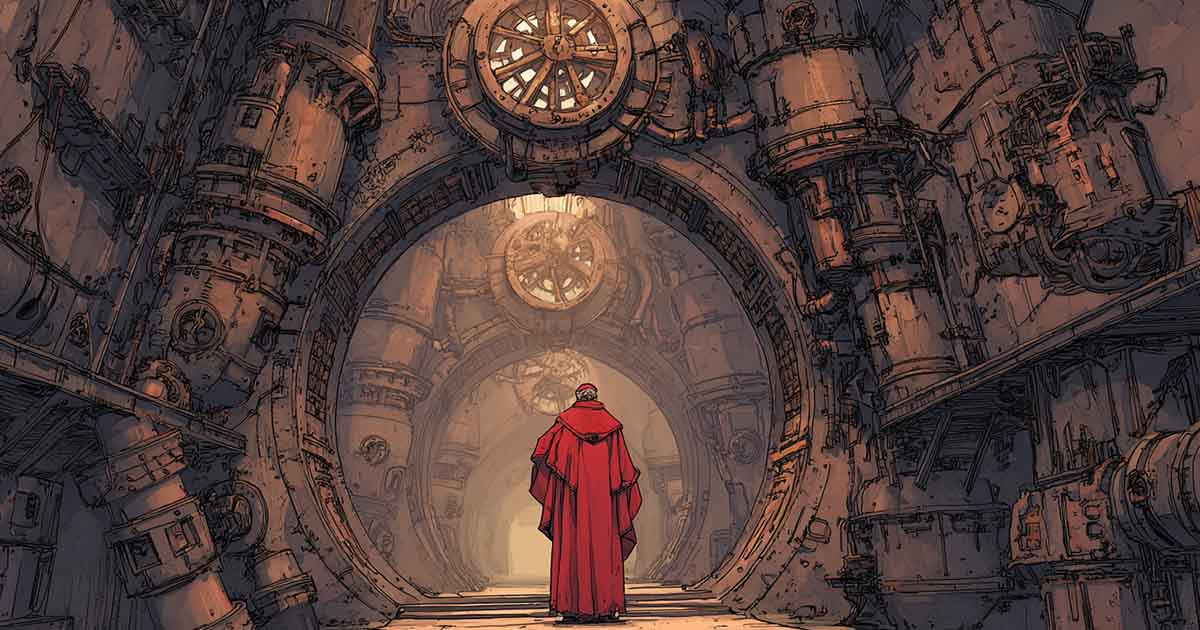
"Gather, Darkness!" showed him working in a different register. It was neither heroic fantasy nor space adventure. Instead, it offered readers a vision of society rebuilt on authoritarian lines.
To a wartime audience, the premise carried clear force. Here was a story about the misuse of power, the exploitation of fear, and the manipulation of human belief.
Yet it was also colorful and fast-moving, with the kind of narrative drive that magazine readers expected. Leiber was a young writer, but in this novel, he displayed confidence in mixing thrills with reflection.
The story struck a chord because it was both topical and timeless. Its setting drew from pulp traditions, but its concerns reached into politics, philosophy, and the fate of civilization.
For readers of 1943, it was something new. For readers today, it remains a striking example of how science fiction can both challenge and entertain.
The World of Miracles and Witches
The novel builds its impact through the society it imagines. Civilization has collapsed, and in its place rises a priesthood that claims the mantle of divine authority.
These rulers maintain control through ritual, pageantry, and a display of wonders that their subjects cannot explain. To the common man, it appears that holy men command the forces of heaven. In truth, what they wield is the remnant of advanced machines.
Leiber gives this world the texture of both the Middle Ages and the machine age. Sacred light shines not from stained glass but from hidden projectors.
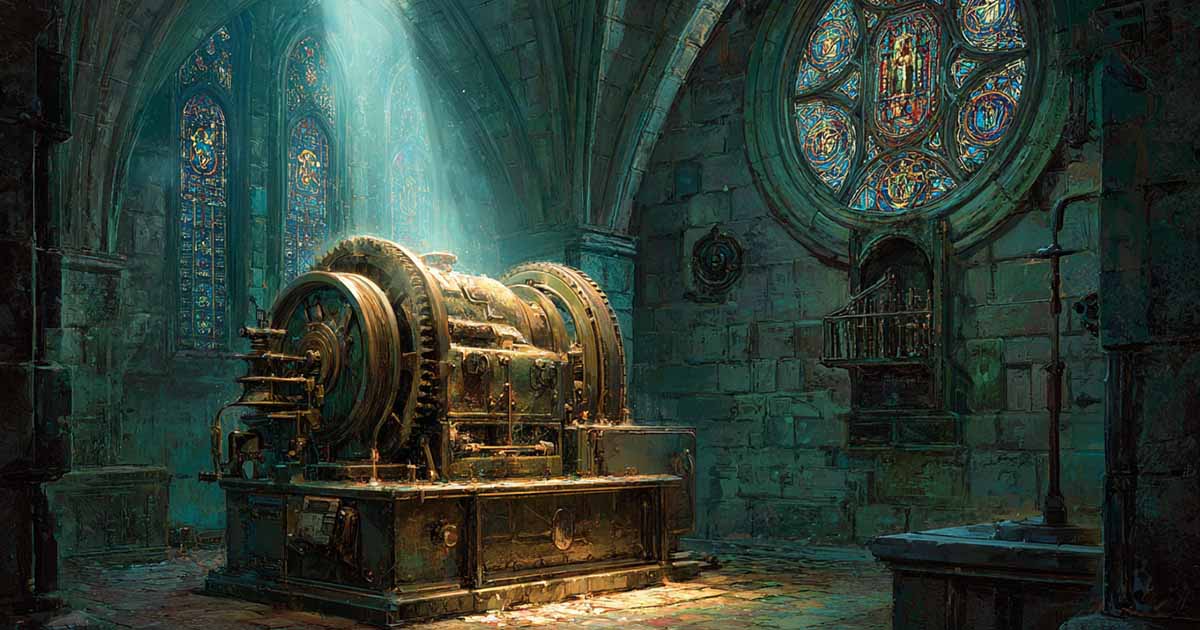
Judgment falls not from the skies but from devices that focus destructive energy. The society dresses itself in the costume of religion while running on buried fragments of science. The mix feels convincing because it echoes the way real civilizations drape ceremony over technology.
Opposition comes in the form of the Witches’ Revolt. To the priests, these rebels are heretics. To the people, they seem like sorcerers rising out of folklore. Their tools are clever devices that mimic the powers attributed to demons and spirits. The revolt builds its identity on fear just as the priesthood does, but it wraps that fear in different imagery.
This balance between sacred illusion and rebellious trickery gives the novel its unusual flavor. The setting feels familiar in its echoes of history but original in its execution. It offers a stage where both science and fantasy have a place, not as blended genres but as rival masks over the same machinery. That tension makes the world vivid and helps explain why the book continues to spark discussion decades after its publication.
Themes of Power, Illusion, and Control
At its core, the novel is about the machinery of belief. The priesthood rules not through raw force alone but through mastery of appearances.
By turning technology into ritual, it convinces people that obedience is not just wise but sacred. The population bows not because of armies but because of fear that heaven itself will punish disobedience. This mechanism of rule is the heart of the book’s critique.
Leiber’s timing sharpened the theme. In 1943, propaganda was a daily reality. Nations relied on slogans, images, and controlled stories to shape opinion.
"Gather, Darkness!" reflects this climate through allegory. The pageantry of miracles mirrors the carefully staged spectacles of modern politics. The novel suggests that what men see and hear can be as binding as chains, and perhaps more lasting.
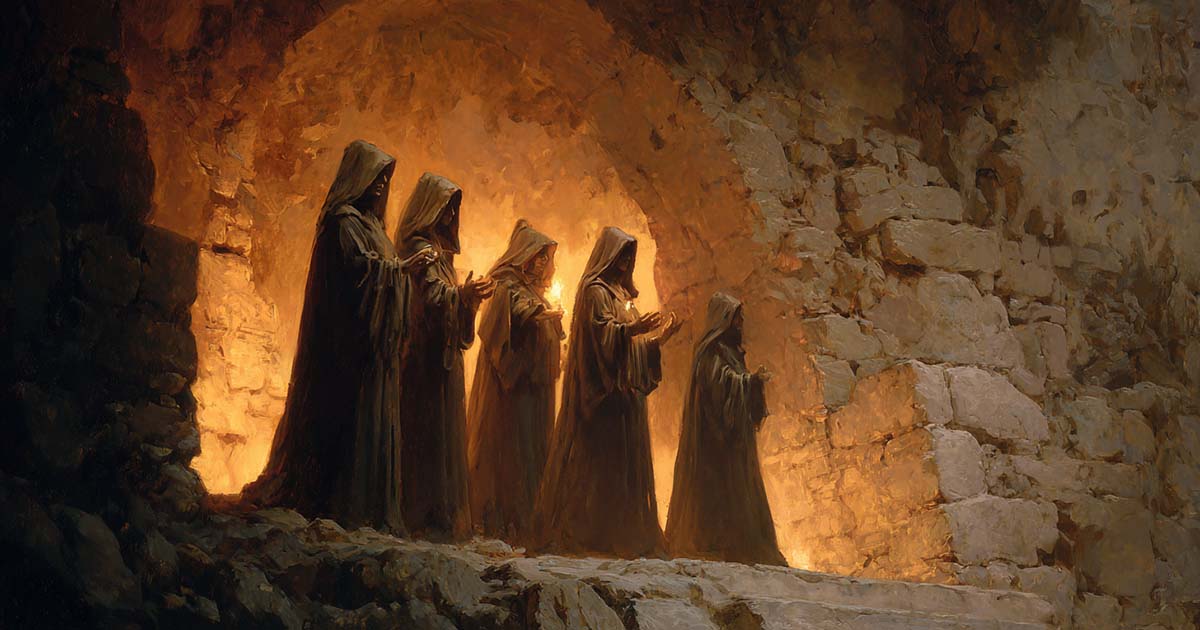
The Witches’ Revolt complicates the picture. They too lean on illusion, dressing their tools in the garb of sorcery. This creates a troubling symmetry. Both sides of the conflict exploit appearances to gain obedience. The difference lies not in method but in motive, and even that is ambiguous.
Leiber refuses to assure the reader that rebellion guarantees virtue. Instead, he leaves open the possibility that new rulers may prove no less manipulative than the old.
This moral ambiguity gives the novel its edge. Many pulp tales offered clear lines between hero and villain. Leiber presents a world where deception is unavoidable, and where truth may be permanently out of reach. The reader is invited to ask whether freedom founded on illusion is truly freedom at all.
The novel also anticipates later science fiction’s interest in blurred categories. Long before Arthur C. Clarke’s famous dictum, Leiber dramatized the way technology can be mistaken for magic. The insight is presented not as a curiosity but as the foundation of political power. That leap gives the story an enduring significance.
Style, Characters, and Structure
The style of "Gather, Darkness!" reflects its place as a pulp serial. Each installment carries momentum, with sharp turns and dramatic confrontations that keep the reader engaged.
The pace rarely slackens. This breathless quality was well-suited to the magazine format, where every chapter had to hold the reader's attention until the next issue arrived. It makes the book quick to read even today.
Leiber’s prose is clear and vigorous, more focused on action than on subtle shading. His descriptions of devices and ceremonies are direct, almost cinematic in nature.
At times, the dialogue has a stilted quality, with exchanges that sound rehearsed. Yet this theatrical tone fits the world of staged miracles and ritual drama. The language feels less like casual conversation and more like performance, which is consistent with the novel’s subject.
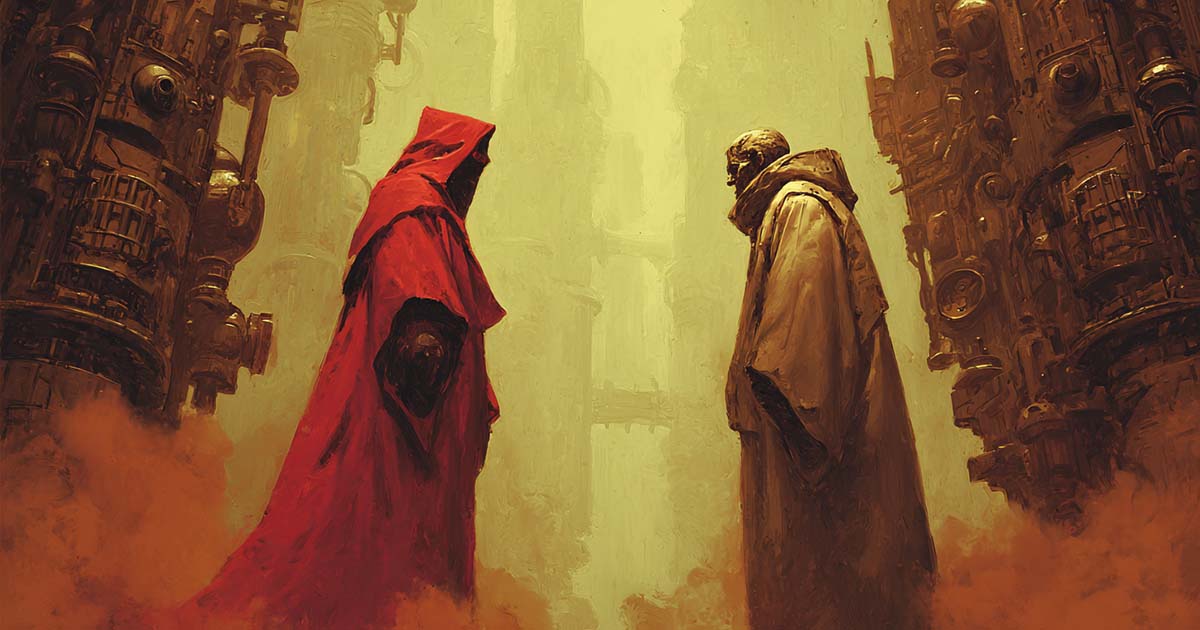
Characters are presented as figures in a parable rather than as full psychological studies. They stand for doubt, loyalty, or ambition rather than embodying the complexity of individual lives.
Readers seeking deep interiority may find them thin. Still, certain characters display flashes of distinction that suggest the richer portraits Leiber would later write in his mature works. Their presence adds texture even if they do not drive the novel with personal depth.
Structurally, the novel is compact and disciplined. It does not wander into subplots or diversions. The central conflict is always in view, and every scene builds toward it.
This tight construction increases the force of the story. It also means the book leaves little room for reflection or character development. What it gains in focus, it loses in breadth.
Taken as a whole, the craft is energetic and effective. It shows a young writer in command of pacing and atmosphere, if not yet fully in command of character depth. It points toward the greater sophistication of Leiber’s later novels while retaining the excitement of pulp storytelling.
Legacy and Relevance
"Gather, Darkness!" occupies a distinctive place in the history of Golden Age science fiction. It was one of the first works to weave a dystopian setting with the trappings of sorcery, and in doing so, it showed how flexible the genre could be.
Leiber proved that science fiction did not have to be about rockets or laboratories. It could also explore faith, authority, and the manipulation of entire societies.
The book’s influence can be traced forward. The idea that advanced technology can be mistaken for magic became a staple of the genre. Later writers would explore it with more polish, but Leiber demonstrated the power of the concept at a time when most pulp fiction kept science and fantasy apart. He revealed how both could be brought together in a way that felt daring rather than confused.
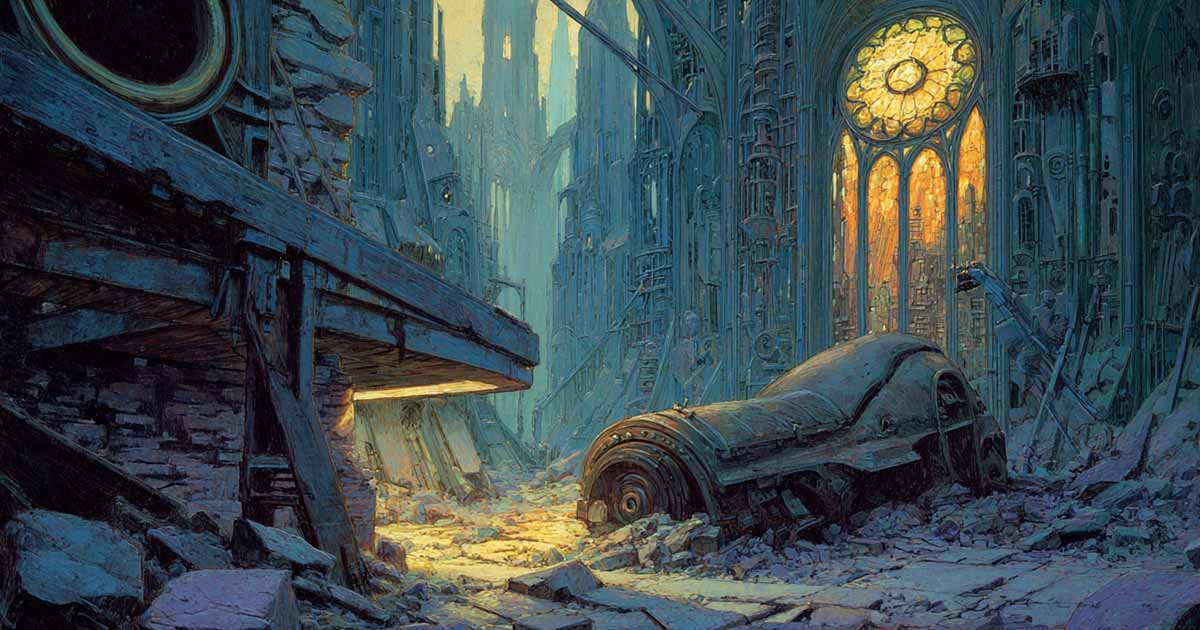
For modern readers, the novel remains striking because of its themes. Questions about how power is presented, how belief is shaped, and how spectacle is used to control have not faded.
They have only grown more relevant in an age of mass communication. The details of Leiber’s imagined theocracy may belong to the 1940s, but the underlying concerns remain timely.
The book is not without flaws. Its brevity limits its characters, and its dialogue sometimes lacks grace. Yet those shortcomings do not erase its achievements.
"Gather, Darkness!" endures as a bold experiment that anticipated later developments in science fiction. It remains a novel worth reading for its vision, its energy, and its unsettling reminder of how easily men can be ruled by the illusions they choose to believe.

